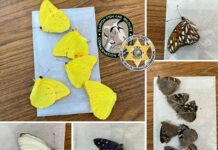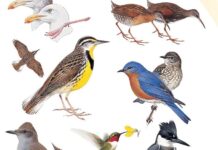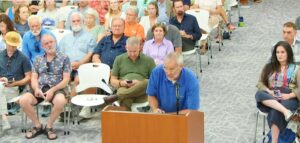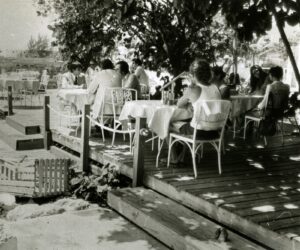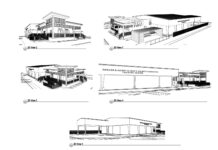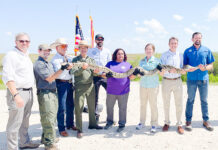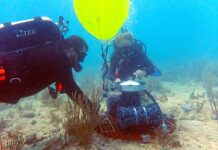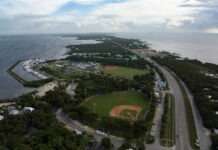Michael Gue likes setting ecosystems on fire — to help save them. The Port Largo resident, a prescribed fire specialist, has been working in Everglades National Park for the past four years, carefully planning and executing burns.
“We pick the day and the timing, and we use natural barriers within the Everglades ecosystem to manage fire spread,” says Gue. “On top of that, we have personnel on-site using pumps, engines, airplanes and helicopters to manage where fire goes.”
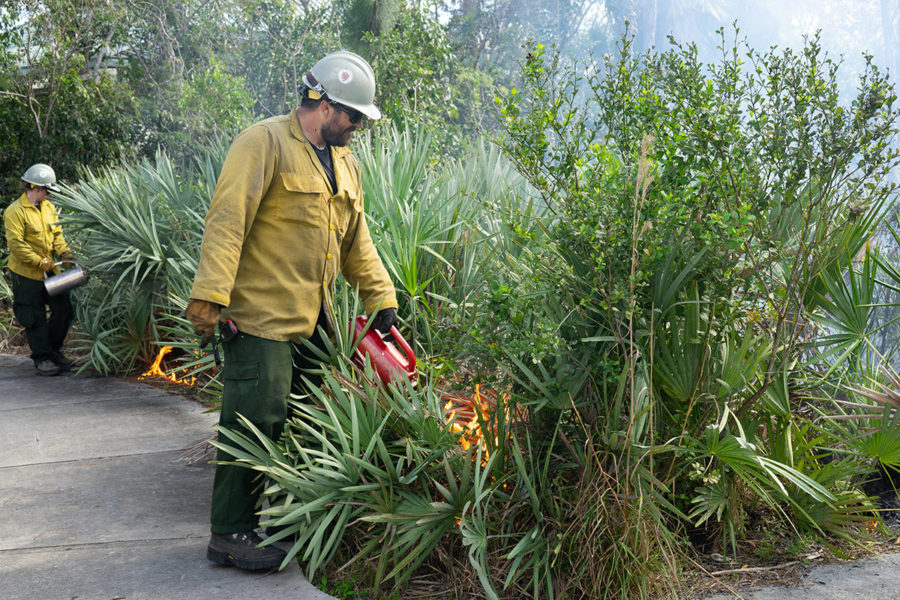
The beneficial reason the fire enthusiast is setting the ’Glades on fire might not be readily apparent. It’s all about fuel reduction.
Against a backdrop of flames around the Ernest Coe Visitor’s Center, Gue explains, “We’re purposefully putting fire on the ground around the visitor’s center and Everglades headquarters to try and reduce the hazardous fuels that you see.”
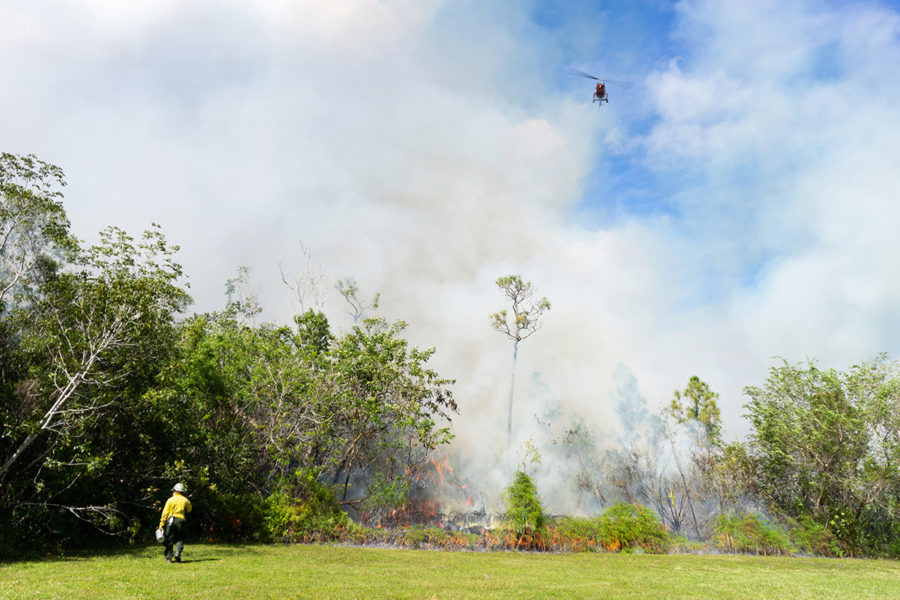
The Everglades is a “fire-adapted” ecosystem, meaning it is supposed to burn. Without fires, the pine rocklands become shrubberies and many native plants disappear, explains Gue.
For those worried about the animals, there’s no need to, adds Gue. His team observed a Florida panther hunting ahead of a prescribed burn. “It was attracted to the smoke. It followed the burn to hunt rabbits and other animals escaping the flames,” Gue says. “These plants and animals are adapted to the fires.”
Fire has always been part of the environment here and part of South Florida, he says. Because humans moved into these environments and began suppressing fires, “fuels” like grasses, shrubs and trees build up over time and set the scene for potentially catastrophic wildfires.
“Hotter, longer, dryer fire seasons, combined with people living in ecosystems where fires are supposed to burn, creates the perfect storm. Prescribed burns increase resiliency and reduce that risk.”
– Michael Gue, prescribed fire specialist
Gue and his team use prescribed fires as a tool to reduce that fuel and protect the communities and park infrastructures around the Everglades from unplanned, uncontrolled wildfires.
“Introducing fire back into these ecosystems creates balance, not just for the ecology but also the communities,” Gue says. “Six million people live in South Florida and have built into fire-adapted ecosystems. The ecosystems have always needed fire, but the communities built into them. They are what burns if we don’t burn the fuel.”
Gue’s team has burned 100,000 acres a year for the last three years to prevent catastrophes like the Australian bush fires or the wildfires in California.

The landscape comes back quickly, with new green shoots coming up from scorched earth within three days and some animals needing the ash to lay their larvae.
There’s also a massive cost saving. Prescribed burns cost the park $4.50 per acre — and officials pick the timing. It could cost over $500 per acre to get a wildfire under control, says Gue.
“We need to shift the way we think about fire to figure out how to live with fire and have fire as part of these ecosystems,” he says. “Then, we can proactively manage this risk.”
He cautions, “Being reactive is more risky, more costly. Proactive benefits ecology, saves money, and can save lives.”
With a smile, Gue adds, “Let’s go light some stuff on fire!”









